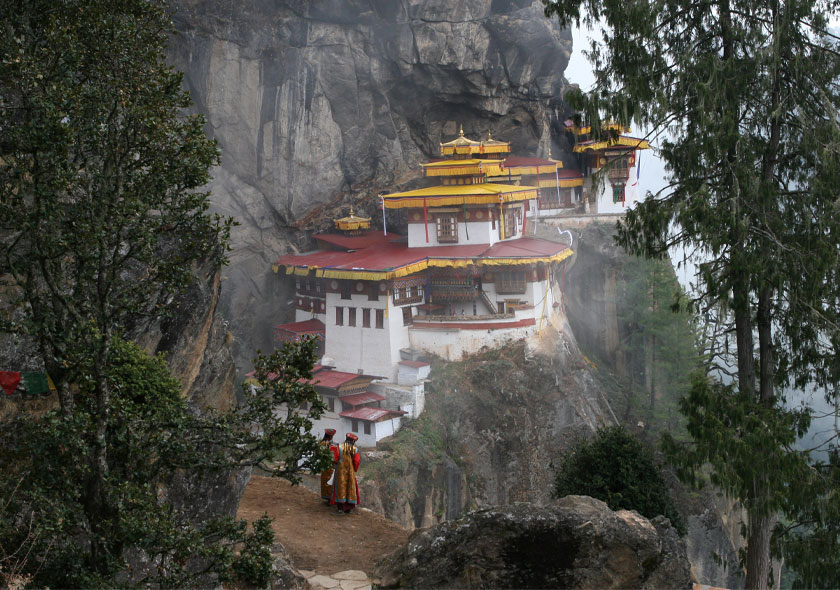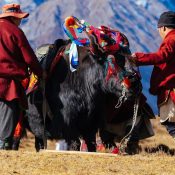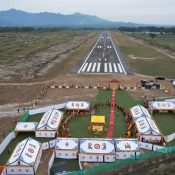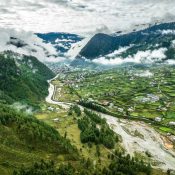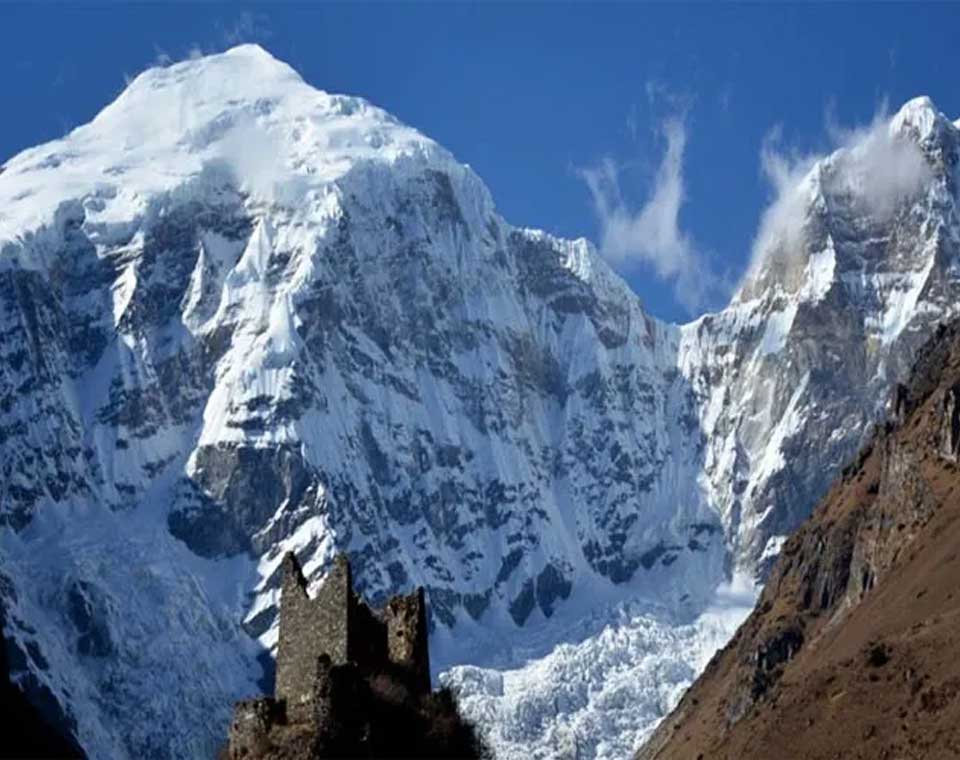
Jomolhari Base Camp Trek – Complete Guide to Trekking in Bhutan
Looking for an adventure that’ll push your limits and blow your mind? The Jomolhari Base Camp Trek will get you there.
This trek isn’t for everyone – it’s tough, takes about a week, and you’ll be sleeping in tents. But if you can handle it, you’re in for something incredible. Standing at 7,314 meters, Mount Jomolhari is considered sacred by locals. Approaching its base camp makes you feel like you’ve entered another planet.
You’ll start from Paro and spend your days walking through valleys in Bhutan that most people never see. The rhododendrons here are massive, the lakes are so clear you can see straight to the bottom, and you’ll meet yak herders who live like their ancestors did centuries ago.
Don’t expect luxury – this is proper wilderness trekking. You might see blue sheep if you’re quiet enough, and snow leopards roam these mountains (though spotting one takes serious luck). The monasteries you’ll visit have been here longer than most countries have existed. Our Bhutan Tour Packages include options for different fitness levels, so you can find what works for you.
So, let’s dive into this guide and explore everything you need to know about the Jomolhari Base Camp Trek for your next adventure trip to Bhutan.
So, What’s the Jomolhari Trek All About?
Mount Jomolhari, also spelt Chomolhari, stands proud at 7,326 meters, straddling the border between Bhutan and Tibet. But the trek doesn’t take you to the summit. Instead, it takes you to its base camp – Jangothang – where the view is nothing short of majestic. That’s where the Jomolhari Base Camp Trek leads.
You walk through thick pine forests, across swinging wooden bridges, beside glacial rivers, and past yak-herding villages. It’s the kind of trek in Bhutan where you get the best of both worlds – dramatic Himalayan landscapes and a deep dive into Bhutanese life and culture.
Jomolhari Trek Bhutan – Route Overview
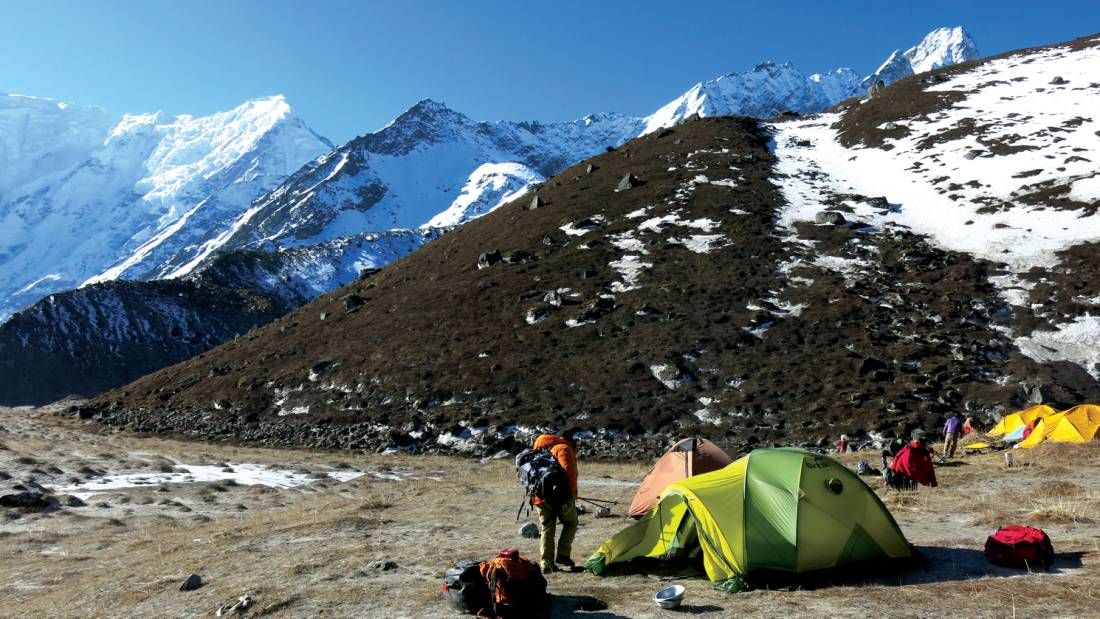
Most people begin their Jomolhari Base Camp Trek from the town of Paro, which is also home to Bhutan’s only international airport. The Jomolhari Trek Bhutan usually takes around 8 to 9 days and covers approximately 80 kilometres
Best Time to Trek Jomolhari

The best time to trek Jomolhari is during spring (March to May) and autumn (late September to early November). During spring, the rhododendrons are in full bloom, and the weather is fresh and cool. In autumn, the skies are usually clear, giving you the best views of the mountains.
Avoid trekking in the monsoon (June to August) due to muddy paths and leeches, and winter (December to February) can be very cold and snowy. Among the many things to do in Bhutan, the Jomolhari Trek stands out as a perfect adventure for nature lovers and mountain enthusiasts.
What to Pack for Jomolhari Base Camp Trek?
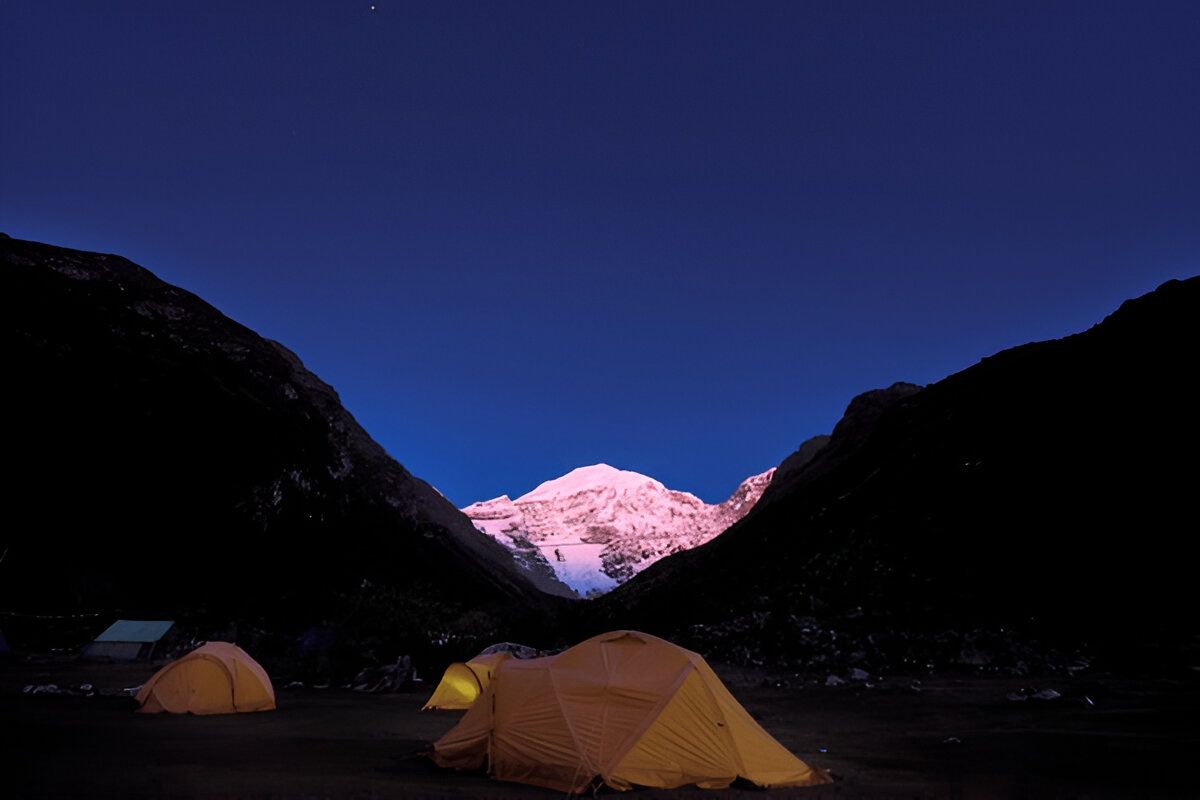
Here’s a basic list of things you’ll need:
- Thermal base layers (top & bottom)
- Fleece or down jacket (for cold nights)
- Waterproof jacket & pants
- 2–3 trekking pants, quick-dry shirts
- Woollen hat, gloves, sun cap
- Warm socks (3-4 pairs)
- Sturdy trekking boots (well broken-in)
- Light camp shoes or sandals
- Daypack (20–30L)
- Sleeping bag (-10°C rating)
- Trekking poles
- Headlamp with batteries
- Water bottle + purification tablets
- Sunscreen (SPF 50+), lip balm and Sunglasses
- biodegradable soap, and hand sanitiser
- First aid kit + personal medicines
- Power bank
- Snacks/energy bars
- Lightweight towel
- Wet wipes (trust us on this)
Food and Stay
You will be sleeping in tents during the trek. Porters or yaks will carry your luggage and food. Meals are simple but filling – expect rice, vegetables, eggs, noodles, and soup. Most trekking companies also provide tea and snacks. You can also try local dishes like ema datshi (chilli and cheese) when you return to Paro.
Why is Mount Jomolhari considered sacred by the locals?
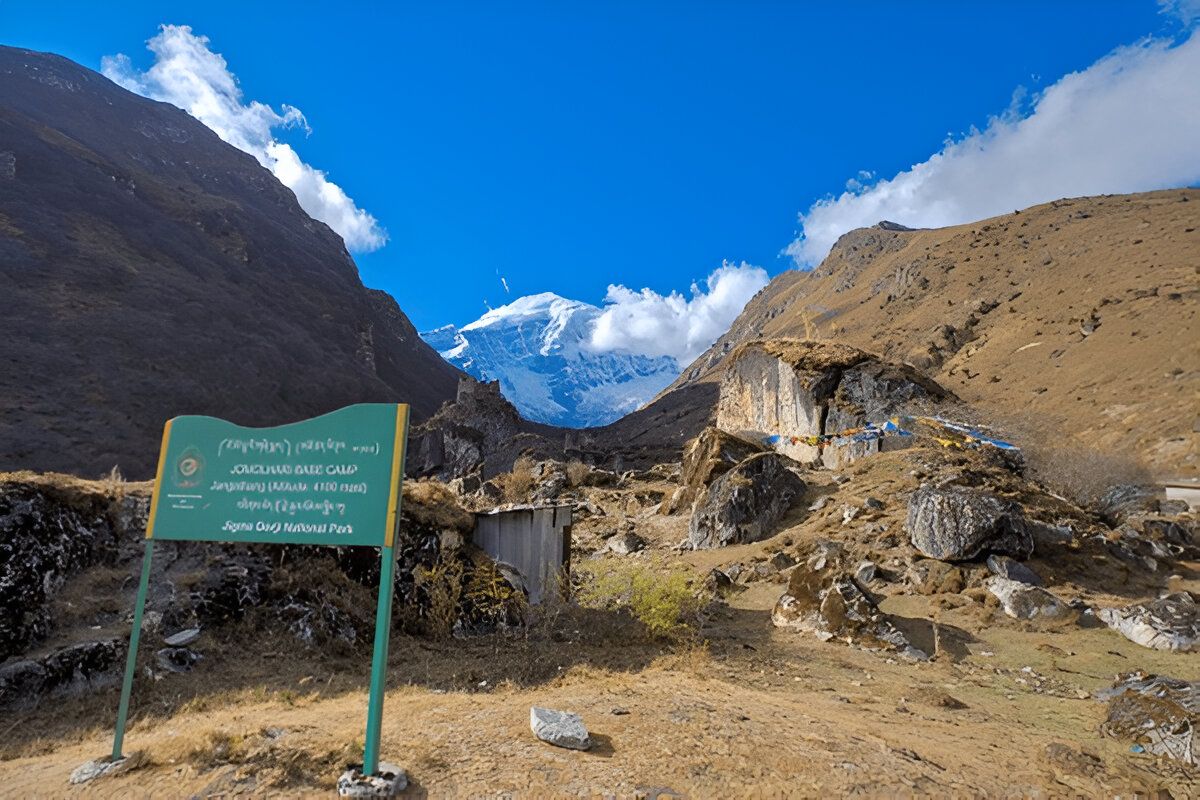
Mount Jomolhari is considered sacred in both Bhutanese and Tibetan Buddhism. Locals believe it is the home of Tsheringma, one of the five guardian goddesses assigned by Guru Rinpoche to protect the land and its people. The mountain features sacred sites like meditation caves and a temple near the base camp.
Bhutanese tradition holds that climbing too high on the mountain is disrespectful to its spiritual significance. As a result, it remains largely unclimbed and revered as a holy site. Pilgrims and trekkers often visit its base with deep respect and spiritual intentions.
Places to Visit Near Jomolhari Base Camp
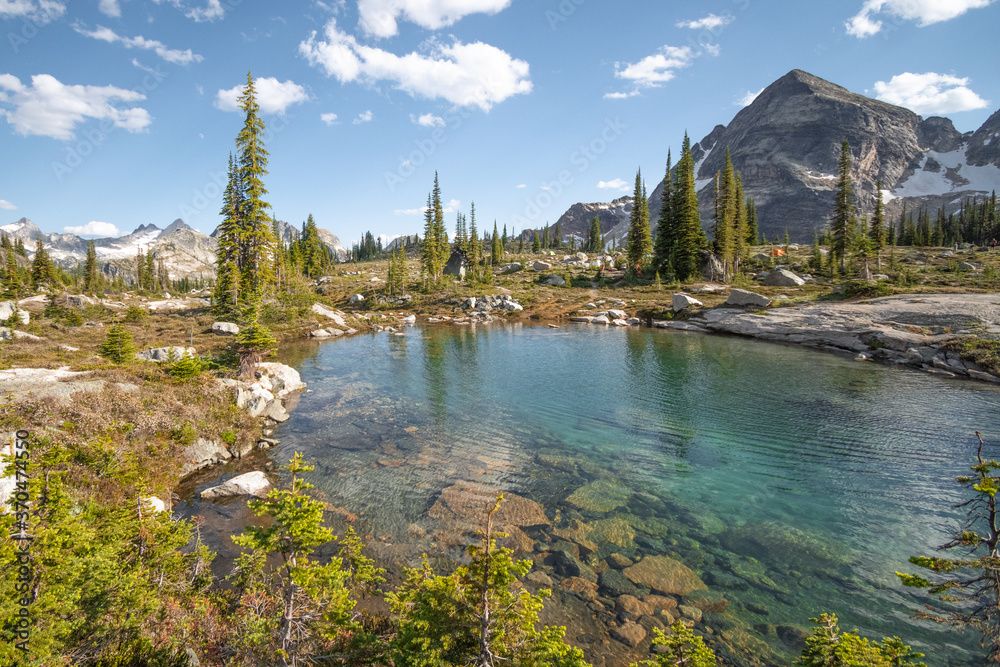
Even though Jangothang (the base camp) feels remote, there are a few beautiful spots nearby that are worth exploring during your rest day or after the trek:
1. Tsho Phu Lakes
A short uphill hike from base camp takes you to these twin glacial lakes surrounded by rocky cliffs and grazing yaks. The reflection of Jomolhari on a clear day is picture-perfect.
2. Jichu Drake Viewpoint
A moderate hike from the camp leads to a ridge with sweeping views of Jichu Drake, another sacred and sharp Himalayan peak that often gets overshadowed by Jomolhari.
3. Soe Yaksa Valley
If you’re doing the longer Jomolhari Loop trek, the trail continues into this scenic valley filled with wildflowers, herders’ huts, and alpine charm.
4. Villages of Soe and Takethang
On the way to or from base camp, you’ll pass traditional Bhutanese villages like Soe, where life moves slowly and locals still live closely with nature and their yaks.
These side spots aren’t crowded or touristy – they offer raw beauty and peaceful surroundings, making your Jomolhari Base Camp Trek experience even more special.
You walk through thick pine forests, across swinging wooden bridges, beside glacial rivers, and past yak-herding villages.
said Polito
Final Thoughts
The Jomolhari Base Camp Trek isn’t the most famous in the world. But maybe that’s what makes it so magical. It’s quiet. It’s remote. It’s honest.
You’re not just walking to a mountain. You’re walking into a different way of life – a life lived slowly, respectfully, in tune with nature. And when you’re sitting by your tent, watching the sun dip behind the snowy slopes of Jomolhari, you’ll know exactly what we mean.
You’ll come for the mountain, but you’ll stay for the peace.
All Categories
- Adventure (1)
- City Tours (1)
- Life Style (4)
- Wild Camping (2)
Recent Posts
Top Bhutan Festivals You Should Not Miss This Year 2025
A New Era Begins: Gelephu International Airport in Bhutan-GMC
Explore Haa Valley – Bhutan’s Hidden Gem of Himalayan Serenity
